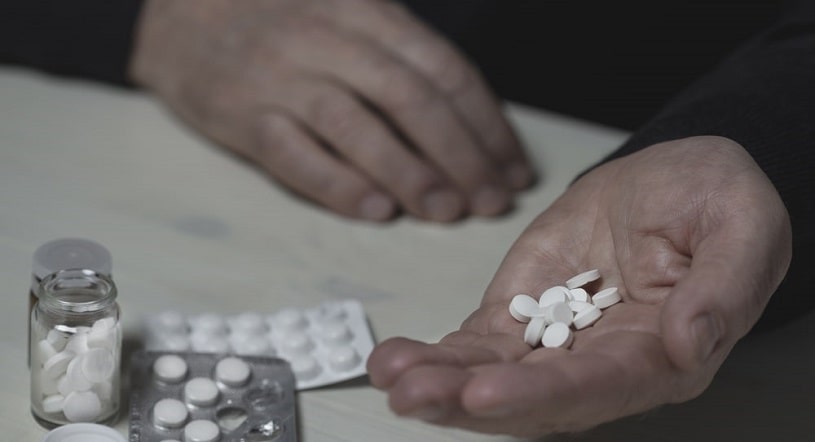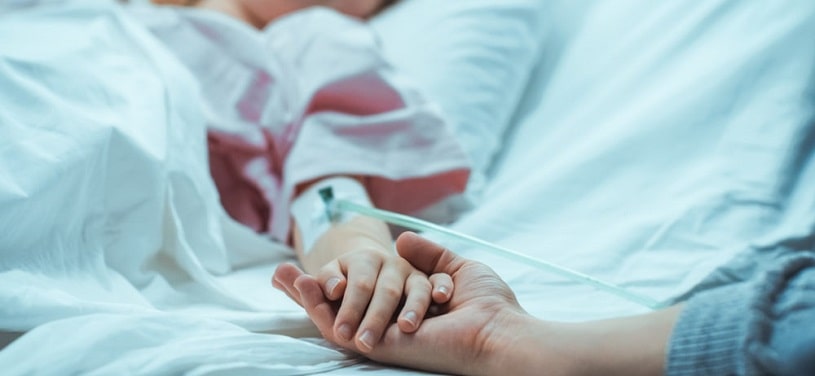Klonopin is a commonly abused drug of the benzodiazepine class. Generically known as Clonazepam, it has essential medical applications but often results in addiction. Addiction is possible both when it is taken as prescribed and when taken recreationally. Compared to other medications in its class, Clonazepam remains in the body longer, which significantly increases the risk of a Clonazepam overdose.
Table Of Contents:
While it is possible to experience a Klonopin overdose by taking too much of the drug, the greatest risk comes from using it with other drugs or alcohol.
Users and their loved ones should be able to recognize the signs of overdose on Clonazepam so they can seek medical treatment immediately and then begin a rehabilitation program.
Klonopin Overdose Amount
Clonazepam overdose with only Clonazepam involved is rare. This is because, in healthy individuals, the fatal dose is high; in mice and rats, it is 2000 mg per kilo of body weight. As for Klonopin overdose amount, it will depend on the strength of the pills. Given the strongest Klonopin pills manufactured and distributed in the US are 2 mg and the average North American adult weighs 80 kilos, most healthy adults would need somewhere in the range of 80,000 Klonopin pills to overdose on Clonazepam alone.
People who snort Klonopin instead of taking pills orally are at a higher risk. This is because while snorting, they cannot control the amount of the substance ingested. In this case, the drug takes effect faster, but its intensity is not as strong. It can make users take more of the drug, leading to more adverse reactions and potentially an overdose.

Reading this, it might sound as though this means there is no risk of overdosing on Clonazepam. However, this is not the case. Instead, Clonazepam overdose is caused when the medication is mixed with other substances or alcohol, referred to as polysubstance abuse.
Polysubstance Use as a Major Cause
Because Klonopin is a central nervous system depressant, the highest risk comes from combining the drug with other central nervous system depressants. Mixing Klonopin and alcohol, for example, can cause respiratory depression to the point where a person stops breathing and dies. There were also some documented cases of lethal outcomes for people consuming Clonazepam with opioids.
Overdose on Clonazepam Can Occur If It Is Mixed With:
- Alcohol
- Opioids
- Barbiturates
- Benzodiazepines
- Street drugs
- Muscle relaxants
- SSRIs
It’s easy to accidentally mix other substances with Klonopin because it has a significant half-life, which runs between 30 and 40 hours. This means any substance used within roughly two days of taking a Klonopin dose could lead to an overdose on Clonazepam.
One should never try to wait out OD symptoms and hope things get better. It is essential to call emergency services at the first sign a drug poisoning is occurring.
Facts About Klonopin Overdose Deaths
Clonazepam overdose death has become more common in recent years, which is directly linked to the opioid crisis. More than 30% of opioid overdoses involve benzodiazepines like Clonazepam. This is due to the increases in benzodiazepine prescriptions, which rose by 67% between 1996 and 2013.
In many cases, the overdoses are accidental, often because doctors will prescribe more than one CNS depressant at a time, which can fatally interact. Because it is not clear what the Klonopin overdose amount is when combined with other drugs, many users and their doctors choose to take this risk. However, some Clonazepam overdose deaths are intentional; studies have found that suicidal overdoses linked to Klonopin and other benzos are rising. This may be due to suicidal thoughts being a side effect of Klonopin and other medications.

In any case, deaths from benzodiazepine use have risen steadily over the last two decades, making them dangerous drugs to use. Medication and polysubstance abuse, in general, should be avoided.
Symptoms and Signs of Clonazepam Overdose
Klonopin use and abuse come with certain risks to one’s health. It’s possible to avoid overdoses if one decides to stop drug abuse and contacts a rehab center to get help. However, sometimes people take the drug for the treatment of mental health conditions that cannot be treated with the help of other medications. In this case, one should know how to recognize the signs and symptoms of poisoning. It will make it possible to get help before it’s too late.
Common Clonazepam Overdose Symptoms Include:
- Altered mental state
- Hyperactivity
- Significant aggression
- Inability to speak properly
- Profound confusion
- Memory loss
- Failure to control the limbs
- Struggles to remain conscious
- Shallow respiration
- Clammy skin
- Dilated pupils
- Weak or rapid pulse
- Unresponsiveness
- Coma
These symptoms are signs of overdoses in general, which means based on the symptoms, one cannot determine if the person is overdosing specifically on Clonazepam. However, should any of these Clonazepam overdose symptoms be observed, help should be sought immediately. Apart from the treatment of the poisoning symptoms, medical professionals can advise undergoing addiction treatment at a rehab facility. It may be necessary if abuse and addiction signs are present in a patient.
What to Do If One Overdoses on Klonopin
As soon as someone suspects a Klonopin overdose is occurring, they should contact emergency services. Many people believe that if they are only noticing the mildest of symptoms, they can wait it out and get better. However, overdoses can accelerate rapidly; one should never delay the treatment.
If the person experiencing any symptoms of Clonazepam overdose is near other people, they should involve them in getting help and monitoring the symptoms.
If the user is alone, they should be prepared to give emergency services the most important information first, just in case they lose consciousness. The user should also sit somewhere so that their body will remain upright even if they pass out to avoid choking risks.
The Proper Order for Giving Information to Emergency Services Is as Follows:
- Give them the location, being as specific as possible. With this, help will arrive.
- State the name of the drugs taken, listing Clonazepam first. Emergency services can bring the proper medications to counteract Clonazepam effects.
- Tell the amount of Klonopin and other substances taken if known. For Klonopin, include all doses taken in the last two days.
- List the times when the substances were taken. It gives emergency services a frame of reference for how long the overdose has been occurring.
- Explain the symptoms being observed and when these symptoms began.
- If known, relay the age, weight, name, and blood type of the user.
After contacting emergency services, never move to another location. Otherwise, help will not know where to go. If there are others with the user, they need to be prepared to perform CPR and keep the user upright or on their side.
Klonopin Overdose Treatment
Klonopin overdose treatment starts with interventions by emergency services. In ideal situations, this will just be monitoring vitals and getting the user to the emergency room. However, it could include administering life-saving medications, intubation, and more. At the hospital, the patient overdosing on Clonazepam will be stabilized, tested, and monitored.

The treatment used may include giving IV fluids, using an antidote, putting activated charcoal in the stomach, using laxatives to flush the system, and putting the user on a ventilator if they are struggling to breathe on their own. This immediate, short-term treatment is vital, but it is just the start. Avoiding future dangers means getting treatment for drug abuse and addiction. Rehabilitation focuses on detoxing the body and building the skills needed to prevent abusing drugs in the future. It also helps the user to address the reasons they began to abuse Clonazepam in the first place.
Sometimes users are tempted to skip this step, figuring that since they did not die, they just need to be more careful. But due to everything from struggles with willpower to the half-life of Klonopin, this will only lead to future overdoses. One can receive treatment in an inpatient or outpatient rehab. These facilities are located throughout the country, making them easy to access.
How to Avoid a Klonopin Overdose?
The only guaranteed method for avoiding a Clonazepam overdose is to stop using the medication. While it’s possible to carefully use the drug, due to its long half-life and dangerous interactions with other CNS depressants, including alcohol, it is easy to accidentally overdose even when taking the medication as prescribed. It is vital that people can spot the signs and seek Klonopin addiction treatment as soon as possible. After hospital care, treatment must be ongoing with a focus on rehabilitation. With the right help, there is hope for recovery from Klonopin addiction.
If someone is exhibiting signs of a Klonopin overdose, contact emergency services and wait for help to arrive. To avoid future overdoses, contact the helpline to learn about rehabilitation options.
Hope Without Commitment
Find the best treatment options. Call our free and confidential helpline
Most private insurances accepted
Page Sources
- Burrows DL, Hagardorn AN, Harlan GC, Wallen ED, Ferslew KE, A fatal drug interaction between oxycodone and Clonazepam, https://www.ncbi.nlm.nih.gov/pubmed/12762549
- Clonazepam: MedlinePlus Drug Information, https://medlineplus.gov/druginfo/meds/a682279.html#overdose
- Centers for Disease Control and Prevention, Changes in Opioid-Involved Overdose Deaths by Opioid Type and Presence of Benzodiazepines, Cocaine, and Methamphetamine — 25 States, July–December 2017 to January–June 2018. https://www.cdc.gov/mmwr/volumes/68/wr/mm6834a2.htm
- Neale, G., & Smith, A. J. (2007). Self-harm and suicide associated with benzodiazepine usage. The British journal of general practice : the journal of the Royal College of General Practitioners, 57(538), 407–408. https://www.ncbi.nlm.nih.gov/pmc/articles/PMC2047018/
- FDA, KLONOPIN TABLETS (Clonazepam), 2017. https://www.accessdata.fda.gov/drugsatfda_docs/label/2017/017533s059lbl.pdf
- Chouinard, G., Young, S. N., & Annable, L. (1983). Antimanic effect of Clonazepam. Biological psychiatry, 18(4), 451-466. https://www.sciencedirect.com/science/article/abs/pii/S003331828572751X

 Authored by
Authored by  Reviewed by
Reviewed by 
